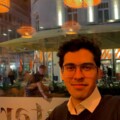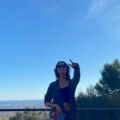"Foreigners Everywhere": The Venice Biennale 2024 Opens New Creative Horizons
The Venice Biennale 2024 aspires to be a groundbreaking event, marked by the inclusion of new protagonists within the international art scene. For the first time in the history of the world-renowned exhibition, the Republic of Benin, Ethiopia, the Democratic Republic of Timor-Leste, and the United Republic of Tanzania have gained their voices within the mainstream discourse on contemporary art, bringing with them a wealth of unique cultural and artistic perspectives. This year’s theme, "Stranieri Ovunque - Foreigners Everywhere", identified by curator Adriano Pedrosa, perfectly embodies the spirit of openness and exploration that defines the Venice Biennale, highlighting the importance of art as a bridge between different cultures.

The Republic of Benin – Everything Precious Is Fragile
Curated by Azu Henry Nwagbogu, the Benin Pavilion features the work of Moufouli Bello, Romuald Hazoume, Chloe Quenum, and Ishola Akpo. The exhibition delves into the fragility of ecology, spirituality, history, and memory through the lens of Guelède, a Yoruba philosophy. Guelède is rooted in indigenous knowledge systems that emphasize the importance of “returning to the mother” (lya). In the era of globalization, these indigenous knowledge networks converge through cosmic and technological frameworks towards a similar notion, known as Rematriation.
The search for Iya took the Benin pavilion to the Arsenale, where a series of installations and paintings contribute to the creation of a unique and distinctive aesthetic. The pavilion was designed by scenographer Franck Houndegla who confessed to follow.art:
“I think the challenge was to use the space and to show it entirely. We didn't want to cover it with panels of the things, [...] it was very interesting, because in the concept, we were talking about the history of Africa and heritage, and we liked to engage in dialogue between the history of Venice, the history of the space, and the history of Benin. It was a dialogue between two types of heritages. So it was not really a constraint, but a very interesting material to work with. […] We tried to use very low tech materials. Because we would like to be really in resonance, in relation to the materials of the space. And for me it's very interesting and important to encourage a dialogue between scenography and architecture, not only with the form but also with the materials.”

The variety of media on show at the pavilion highlights an artistic renaissance for Benin, showcasing its growing role within the international art scene. By valuing its traditions and promoting contemporary expressions, Benin stands as an example of how art can be a catalyst for transformation and cultural dialogue. By embracing two opposing, yet everso complementary concepts – vulnerability and resilience – the artists reflect on the delicate balance between the two, necessary to nurture profound wisdom and beauty in a world overflowing with political polarization.
We want the pavilion to be a place where visitors feel comfortable, where they can sit and discuss it between each other. A place where they can rest, 'cause, you know, in Venice it's a kind of hustle and bustle, you have to be very reactive, you're always in a hurry. We like that our pavilion will be a place where people can stay five minutes, but also one hour – so a space where you can stay as long as you want.

Ethiopia – Prejudice and Belonging
Tesfaye Urgessa represents Ethiopia in its inaugural participation at the 60th International Art Exhibition - La Biennale di Venezia 2024. Renowned author and poet Lemn Sissay, OBE FRSL curates this milestone in the country's art history.
The Ethiopian pavilion takes stage at Palazzo Bollani, and it presents a series of paintings that juxtapose domestic objects with intertwined nude silhouettes, engaging viewers with a sense of mutual vulnerability. The balance between gestural forms and the bold use of color invites viewers to explore the emotional and conceptual depths of Urgessa’s creations. Utilizing various media, including oil paintings on canvas, sculptures, and installations, the artist addresses complex themes related to society, politics, and identity; his art is propelled by social activism and storytelling, challenging power dynamics and exploring concepts of agency and race.
Ugressa's journey began in Addis Ababa, later taking him to the Ale School of Art and Design, and Germany's Staatlichen Akademie der Bildenden Künste Stuttgart. His unique style, influenced by German Neo-Expressionism and traditional Ethiopian iconography, explores themes of race and identity. He paints multiple canvases simultaneously, experimenting with images to spark a creative 'chain reaction'. Urgessa's unique blend of Ethiopian traditional motifs and figurative painting, influenced by his studies at Staatlichen Akademie in Stuttgart and experiences in Germany, presents characters that convey a spectrum of emotions, exploring the complexities of cultural identity and migration, marking a powerful debut for Ethiopian art at the Venice Biennale.
I am just trying to show people who made it through without denying that the struggle has left the trace of a scar. They made it through, so it is just like when you see a lion with scars on his face, my figure is holding all that kind of emotion, fragility as well as confidence. It is a paradox. I want to give the figure presenting himself without any judgement without any denial. He is saying this is who I am, this is what I am.

The Democratic Republic of Timor-Leste – Kiss and Don’t Tell
Nathalie King's curation of the Timor-Leste Pavilion presents Maria Madeira's powerful installation "Kiss and Don’t Tell". Madeira was born in Gleno, Timor-Leste. After the Indonesian invasion in 1975, her family fled to a Red Cross refugee camp in Portugal. During her seven years there, singing and art became her salvation, allowing the artist to express herself, while preserving her heritage. In 1983, Madeira’s family moved to Australia. Upon returning to her homeland after the Timorese citizens voted for independence in 1999, she discovered her childhood bedroom had colored marks at knee height. Research revealed those were lipstick marks, and the room had been a torture chamber during the Indonesian occupation, where Timorese women were forced to kneel and kiss the walls, leaving lasting impressions of their suffering.
Kiss and Don’t Tell is hosted in the premises of Spazio Ravà (S. Polo), it consists of four components: a large installation featuring 25 panelled paintings with red earth at the foot of each, a performance video, an intervention of lipstick marks onto the gallery window and a live performance of Madeira’s completion of the work.

Kiss and Don’t Tell is hosted in the premises of Spazio Ravà (S. Polo), it consists of four components: a large installation featuring 25 panelled paintings with red earth at the foot of each, a performance video, an intervention of lipstick marks onto the gallery window and a live performance of Madeira’s completion of the work.
Every day at 3pm during the Vernissage, the artist would add lipstick and betelnut to her canvas while singing traditional Tetun songs, including the haunting "Ina Lou" ("Dear Mother Earth"). Madeira turned to materials native to the Island to evoke the scars borne in the resistance, intertwining personal and collective histories in a narrative of remembrance and healing.
In my song, I urge all of us to unite with our motherland, to co-exist so all our tears turn into streams to wash away the pain and heal the earth.

The United Republic of Tanzania – A Flight in Reverse Mirrors
"A Flight in Reverse Mirrors", presented in the Tanzania Pavilion, takes visitors through four imaginary rooms representing different eras of Tanzanian history. The pavilion features works by Lutengano Mwakisopile, Happy Robert, Naby, and Haji Chilonga. Located in Cannaregio (Fabbrica del Vedere - Calle del Forno), the exhibition vividly captures the essence of Tanzanian heritage through the distinct perspectives and artistic expressions of these four talented artists. Enrico Bittoto, the curator of the Pavilion, told follow.art:
“The project ‘A flight in reverse mirrors (the discovery of the Other)’ consists of four imaginary rooms, representative of four epochs of Tanzanian history (starting from the late 1800s, up to the first decades of the 21st century, and in a hypothetical decontextualized future/present), but not only that -- in a specular and crossed comparison with each other. Nourished by this kaleidoscopic vision and exchange, the last room will self-hybridize, becoming a sort of invisible spirit in the form of an anthropomorphic moth, to visit, as in a metaphorical flight, the other three rooms and, in gathering sensations and moods, will undergo a final metamorphosis giving rise to a new and cyclical beginning of the same path. The exhibited works, paintings, woodcuts, and site-specific installations deal with themes of travel, migration in opposite directions (colonization VS economic emigration), the inevitability of human and animal nomadism guided by feelings or needs, and the transformations that environmental changes impose on the individual. The idea behind the pavilion, which aims to study the principles underlying the curatorial concept of this 60th Biennale, is the discovery of the birth of the concept of the "Other," and Tanzania offers us a privileged observation point in this sense, being one of the cradles of humanity where the first exchanges between man and nature and man and animal developed, by the hands of the first conscious Creatives.”
The exhibition explores the motifs outlined by Bittoto through a variety of artistic media, including paintings, woodcuts, and site-specific installations. It investigates the origins of human-nature relationships and the role of artists as mediators, offering a cyclical view of death and rebirth – belonging, and exclusion.

Art for us must be pedagogical, so we expect that those who leave our Pavilion can gain a greater awareness of the theme addressed by the curatorial project
The inclusion of these four new countries in the Venice Biennale 2024 is not only a celebration of diversity, but also a recognition of new artistic narratives, offering a fresh perspective of the world as we know it. "Foreigners Everywhere" is not just a theme but a call to action – to embrace and value the differences that make us unique, rather than ignoring or opposing them. The ongoing dialogue revolving around the 60th edition of the Biennale is setting a high standard in terms of what is expected from the show – an experiential journey through the multiple facets of global contemporary art.
Share the post:














